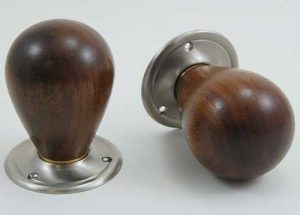Introduction: The evolution of door knob designs throughout history is a testament to the ever-changing aesthetic preferences, technological advancements, and cultural influences that shape our built environment. From ancient rudimentary handles to modern smart locks, this exploration uncovers the fascinating journey of door knob trends that have left their mark on architecture and design.
Chapter 1: Ancient Beginnings The earliest door knob trends can be traced back to ancient civilizations like Egypt, where rudimentary knobs were carved from stone. This chapter explores how necessity drove the development of basic door handle designs, serving utilitarian purposes in a world that was only beginning to grasp the concept of architectural aesthetics.
Chapter 2: Ornate Craftsmanship in Medieval Times Medieval and Renaissance eras witnessed a shift towards more elaborate door knob designs. Castles and cathedrals featured ornate metalwork, intricate engravings, and motifs inspired by nature and religion. This chapter delves into how these designs reflected the artistic movements and societal values of their time.
Chapter 3: Victorian Opulence The Victorian era introduced a new level of opulence to door knob trends. The rise of industrialization allowed for mass production, leading to the creation of highly detailed and decorative knobs made from materials like brass and glass. This chapter uncovers how Victorian aesthetics influenced both residential and commercial door knob designs.
Chapter 4: Art Deco and Modernism The 20th century brought about shifts in design philosophy, from the sleek lines of Art Deco to the minimalism of Modernism. Door knob designs reflected these changes, with Art Deco knobs featuring geometric patterns and Modernist knobs embracing simplicity and functionality. This chapter explores the interplay between design movements and door knob trends.
Chapter 5: Mid-Century Modern Revival Mid-century modern design made a resurgence in the latter part of the 20th century, bringing back iconic door knob designs characterized by clean lines and organic shapes. This chapter examines how mid-century modern aesthetics continue to influence door knob trends in contemporary interiors.
Chapter 6: Technological Innovations and Smart Locks Advancements in technology have led to the integration of smart locks and electronic access systems. This chapter traces the rise of keyless entry solutions and how they have transformed not only the functionality but also the aesthetics of door knobs, merging traditional designs with cutting-edge technology.
Chapter 7: Sustainability and Eco-Friendly Trends In recent years, sustainable design has become a significant trend across industries. This chapter explores how door knob designs are adapting to eco-friendly materials, production processes, and a renewed emphasis on durability and longevity.
Chapter 8: Contemporary Eclecticism Contemporary door knob trends draw inspiration from a multitude of eras and cultures, resulting in eclectic designs that celebrate diversity and individuality. This chapter discusses how designers are embracing a “mix and match” approach, creating door knobs that reflect the globalized and multicultural world we live in.
Chapter 9: Future Directions As technology and design continue to evolve, this chapter speculates on the potential future directions of door knob trends. From advancements in smart technology to the integration of sustainable materials, the door knob remains a canvas for innovation and creativity.
Conclusion: A Design Time Capsule The history of door knob trends serves as a design time capsule, encapsulating the aesthetics, values, and technological progress of different eras. From humble beginnings to intricate works of art, door knobs continue to be functional and aesthetic touchpoints that weave the threads of history and design into the fabric of our built environment.








